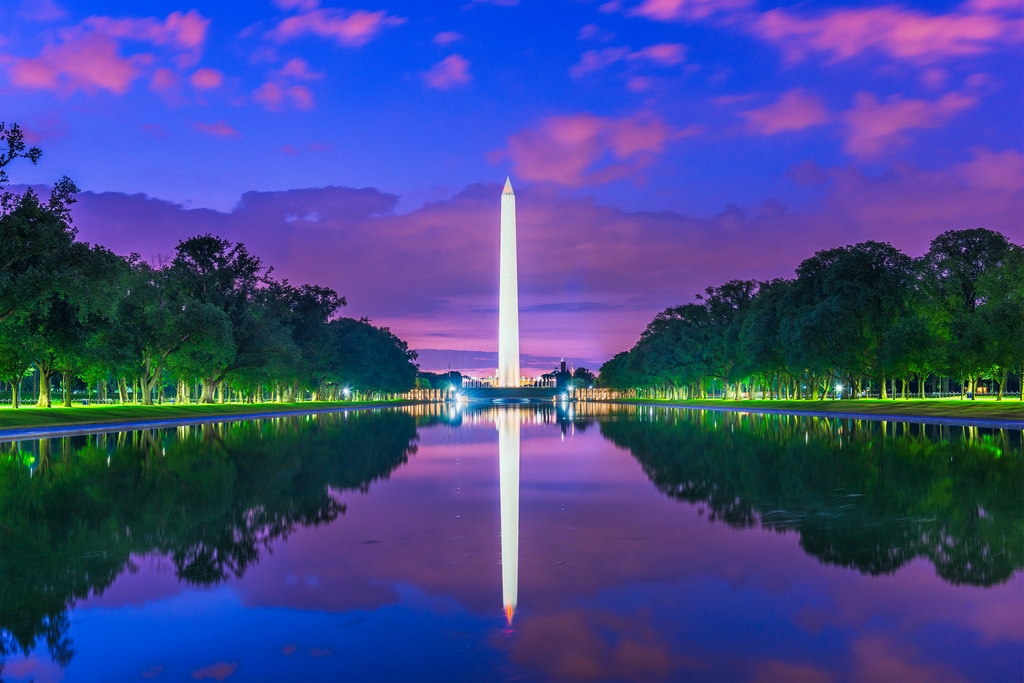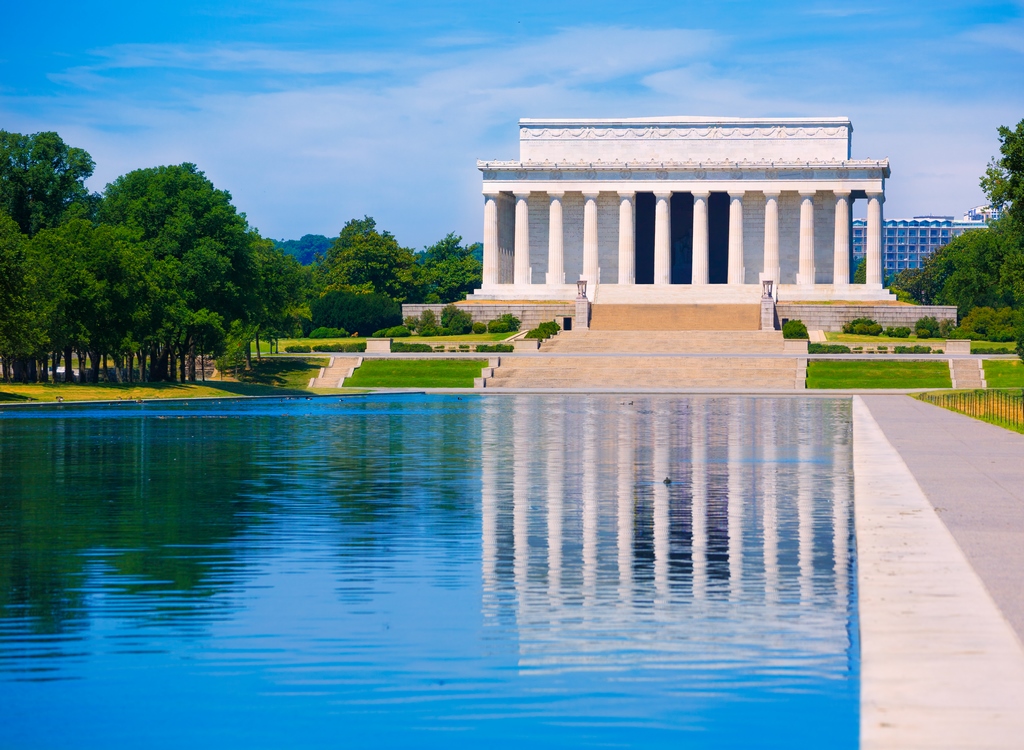A Century of Reflections


Completed in 1923, the Lincoln Memorial Reflecting Pool is one of the truly iconic and most recognizable watershapes in the U.S. Serving as a visual centerpiece for the Mall in Washington D.C., the glassy expanse of water has undergone a major renovation, faced a number of ongoing maintenance challenges — and been the site of numerous historic events.
By Eric Herman
The iconic Lincoln Memorial Reflecting Pool in Washington D.C. turns 100 this year. The site of numerous historical events, the pool has also suffered from maintenance issues beneath its mirror-like surface.
If you visited our nation’s capital between November 2010 and August 2012, you would have noticed the pool was undergoing renovation on a truly historic scale. How big was the project? The cost to tax payers checked in at an impressive $34 million.
The sea-to-shining-sea-sized budget was due to both the enormous size of the pool and the extensive nature of the work. The pool measures 2,029 feet long, more than a third of a mile, and 167 feet wide. It ranges between 18 inches deep on the sides and 30 inches in the middle, and holds a whopping 6.75 million gallons.
AMBITIOUS HISTORY
Designed by legendary architect, Henry Bacon, planning for the pool began in 1915. Over the years, many historians and architectural aficionados have compared the pool to the similar one in front of India’s Taj Mahal. It was constructed in 1922-23, following the dedication of the adjacent Lincoln Memorial. It would be Bacon’s final project before he died in 1924.
It was originally built with an asphalt and tile bottom, and from the start had been plagued with leaks and water-quality issues. Over the decades, the vessel fell into extreme disrepair with severe water quality problems and a failing structure. By 2010, it was leaking more than 500,000 gallons per week and riddled with severe algae blooms.
The renovation was paid for with funding from the American Recovery and Reinvestment Act of 2009 and was run by the National Park Service, which operates the Mall, and many of our nation’s most iconic landmarks and memorials, along with expert private sector help from the Louis Berger Group, a New Jersey-based construction and engineering management firm.
The pool’s water supply system was updated to ensure water quality. The revamped circulation and filtration system uses water circulated from the nearby Potomac Tidal Basin. The work also including adding a new reinforced concrete foundation, which is supported by 2,113 new wooden pilings that sink 40 feet through the marshy soil to bedrock below.
Paved walking paths were added to the north and south sides of the pool to replace worn grass and to prevent erosion, which had also become a maintenance problem.
ONGOING ISSUES
Unfortunately, the renovation did not bring an end to the pool’s troubled water.
Within weeks of the it reopening in 2012, the water had to be drained again and cleaned at a cost of $100,000 due to a massive algae outbreak. The algal growth was so extensive it almost completely covered the surface of the pool. Using an ozone disinfectant system installed during the renovation, the NPS said it doubled the pool’s ozone treatment to control future outbreaks, which for the most part worked, although some algae remain, particularly in the summer months.
In 2013, construction of the National World War II damaged the eastern end of the pool. NPS workers closed the eastern 30 feet of the pool in August 2015 to repair the basin, work that was completed in the summer of 2016.
The Reflecting Pool was again completely drained in June 2017 to control a parasitical outbreak. The parasite, which causes swimmer’s itch, also infects snails that live in the pool. More than 80 ducks and ducklings have died at the pool due to parasitical infection since May 20.
It took I0 days to refill.
A PLACE TO SEE
Today the grand reflecting pool is operating mostly trouble free and serves its role as a visual centerpiece between the Lincoln Memorial and Washington monuments. Depending where you’re standing, the pool offers reflective views of both landmarks, or the surrounding famous cherry trees and sky.
It has served as the familiar center for some of the most historic gatherings in U.S. history including the 1963 civil rights “March on Washington for Jobs and Freedom,” at which the Reverend Martin Luther King’s delivered the famous “I Have a Dream” speech to a crowd of more than 250,000 people.
From a watershape-design perspective, it’s an ingenious visual device that unifies sky, greenery and some of our nation’s most iconic architecture, all in a sprawling and comfortable space that is deeply rewarding.
Like our great nation itself, the waters may not be perfect, but more than worth the upkeep.
An earlier version of this article by Eric Herman appeared in AQUA Magazine in July of 2017.
Opening image by Sean Pavone | Shutterstock, lower image by lumarina | Shutterstock










